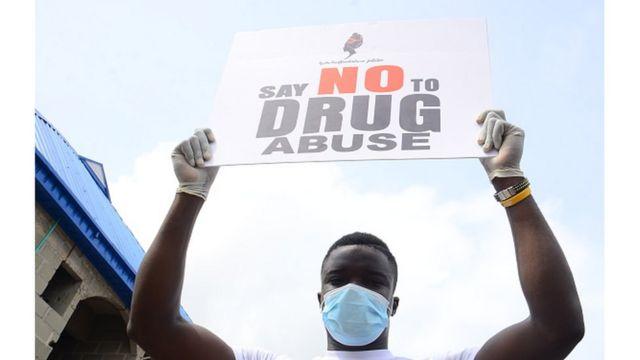Drugs in young people: causes, consequences, what to do?
Figures on the consumption of psychoactive substances among young people in France
No teenager is immune and all socio-economic backgrounds are affected. However, boys are slightly more at risk than girls: 74% of girls and 81% of boys aged 17 report having consumed alcohol in the last month. For cannabis, it's 20% girls and 30% boys. But good news: on average, consumption figures are rather down according to the study carried out by Santé Publique France and published in September 2019. Thus, between 2014 and 2018, alcohol consumption among adolescents fell from 64 .4% to 60.0%. Regarding cannabis, while in 2018 French teenagers were the 10th largest consumers in Europe, in 2010 they were in first place (1). Finally, experimentation with illicit drugs (other than cannabis) among 17-year-olds remained fairly stable between 2014 and 2017 (around 6.8%): 2.8% of 17-year-olds had already experimented with cocaine, 3 8.8% ecstasy and 8.8% poppers (2).
What are the causes of drugs in young people?
Adolescence is a period of vulnerability. "It is always difficult to know why an individual experiments with the consumption of such and such a product", explains Dr. Hervé Martini. There is not a single explanation for this experiment but sometimes several that add up or follow one another:
Example of alcohol: according to the report carried out by Santé Publique France, the consumption of alcohol "is strongly associated with partying. Three quarters of consumers aged 18 to 25, in France in 2017, thus said they had consumed alcohol in the past 12 months to make the holidays more successful.Taste remained the main motivation cited for drinking (92.2%). for festive reasons or for the pleasure of taste, drink an average of 4 to 5 glasses per occasion and between 90 and 110 days a year."
What are the consequences on their health?
Drug use causes short and long-term damage.

→ In the short term, the main effects are violence as a victim or perpetrator, unwanted and unprotected sexual intercourse, road accidents, injuries due to falls or drowning. → In the long term, the consumption of narcotics and alcohol is responsible for irreversible damage to the development of the brain, the occurrence of pathologies such as schizophrenia, depression, arterial hypertension and cardiovascular accidents. Tobacco, cannabis and alcohol increase the risk of developing cancers, pulmonary and cardiovascular pathologies and more particularly cancers of the aerodigestive tract and lungs.
How to connect android to Projector/TV via MHL/Micro-USB/HDMI cables http://t.co/C9o1x0gQrX
— ekoob Wed Sep 11 23:41:22 +0000 2013
What are the symptoms of drug use in a young person?
The uses and consequences of drug use vary considerably from one subject to another, the severity of the behavior and according to the products consumed. "The signs of acute consumption can be: intoxication (alcoholic or cannabis intoxication, for example), excitement, euphoria, hallucinations or on the contrary depression, prostration... You have to be attentive and vigilant to any change in behavior: fewer outings with friends, withdrawal, sleep disorder, difficulty at school... Later, signs evoking depression or an anxiety disorder may appear", indicates our expert.
What are the solutions to fight against drugs among young people?
► "First of all, you have to maintain the dialogue and be attentive to your teenager, ask him about his day, how he will... even if the answer is often invariably the same. Because asking this question is telling him that we are interested in him, recommends Dr. Martini. It is also keeping a certain benevolent distance with him: knowing not be far, without being too close." Young consumer consultations (CJC) are also there to take stock with him and his family.
► Addictology care, support and prevention centers (CSAPA) also contribute and offer individualized support around a multidisciplinary team. Hospital services specializing in addictology also welcome adolescents and their families.
►The doctors present offer a cessation program in the event of moderate consumption or a substitution treatment in the event of greater use, in particular of opiates. Withdrawal can be outpatient or hospitalized, depending on the choice of the young person and the extent of his addiction. "Remote monitoring of withdrawal is essential to avoid relapses. The attending physician can also be contacted", specifies our expert.
What prevention should be done?
Prevention is a key factor in preventing young people from being tempted to use these substances. "The use of a psychoactive substance by a young person should not be a taboo subject. Formulating clear messages on the products and the risks inherent in this or that behavior is the role of everyone: parent, teacher and educator... “, assures the adictologist.
What you can do:
"Specific programs have demonstrated their effectiveness for young people: they are offered by prevention associations, particularly in connection with the school environment. For example, the Good Behavior Game project carried out by Association Addictions France aims to give tools to teachers in order to increase the psychosocial skills of children or even in the direction of parents through programs such as "A family affair", adds Dr. Martini.
Sources:
Consumption of psychoactive substances among young people in France and in certain high-income countries. Public Health France – September 2019
Website of the Interministerial Mission for the Fight against Drugs and Addictive Behaviours, MILD&Ca








